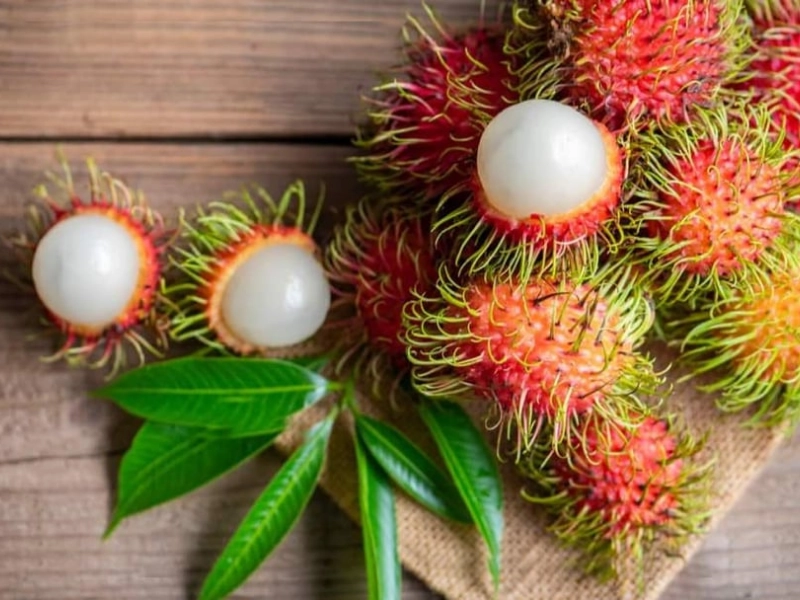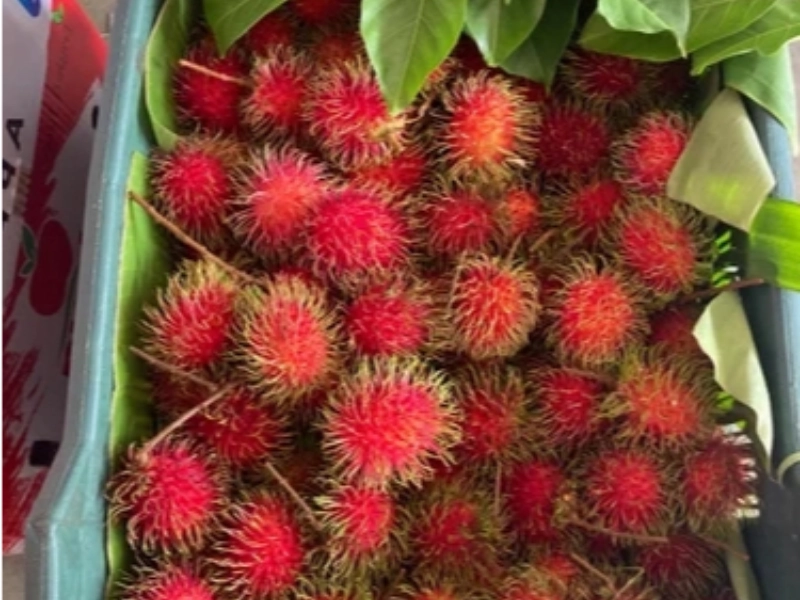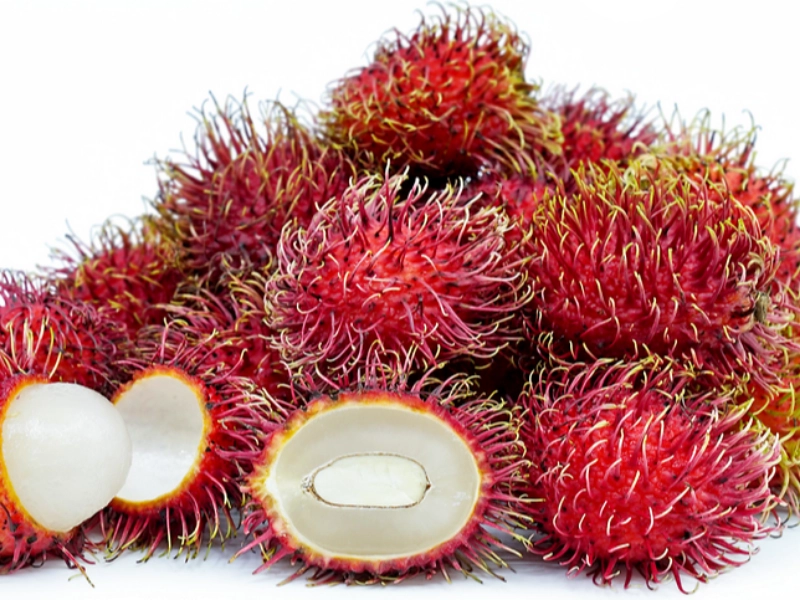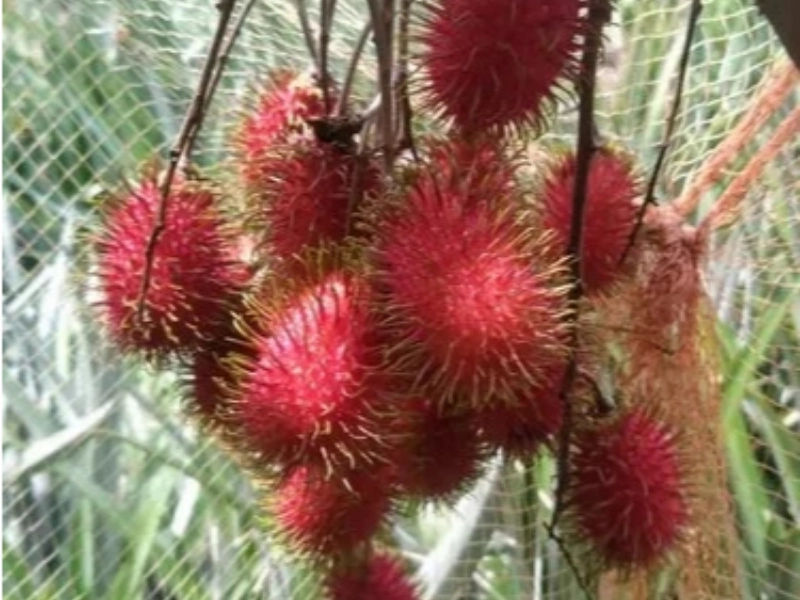Globally, rambutan—a tropical fruit with distinctive hairy outside and sweet, juicy flesh—is quickly becoming rather well-known. Originally from Southeast Asia, this unusual fruit is not only aesthetically arresting but also quite nutrient-dense. Rambutan is fast becoming a must-try for fruit lovers all around as more people find its delicious taste and health advantages. From its beginnings to its culinary applications, this essay investigates the several facets of ramboutan and the reasons it is sweeping the globe.

 Not only tastes great, but rambutan also provides a lot of nutrients. This fruit is low in calories, so it's a great choice for people trying to either keep or drop weight. Essential vitamins and minerals abound in one serving of ramboutan: vitamin C, calcium, and iron among others. Particularly important is vitamin C since it boosts immune system, encourages good skin, and helps iron be absorbed.
Furthermore high in antioxidants, rambutan aids in the fight against oxidative stress and bodily inflammation. These antioxidants might help lower the risk of chronic illnesses including cancer and heart disease. In hot conditions, the fruit is a refreshing snack since its great water content helps to hydrate one. Including rambutan into your diet will improve general health and well-being given its remarkable nutrient profile.
Not only tastes great, but rambutan also provides a lot of nutrients. This fruit is low in calories, so it's a great choice for people trying to either keep or drop weight. Essential vitamins and minerals abound in one serving of ramboutan: vitamin C, calcium, and iron among others. Particularly important is vitamin C since it boosts immune system, encourages good skin, and helps iron be absorbed.
Furthermore high in antioxidants, rambutan aids in the fight against oxidative stress and bodily inflammation. These antioxidants might help lower the risk of chronic illnesses including cancer and heart disease. In hot conditions, the fruit is a refreshing snack since its great water content helps to hydrate one. Including rambutan into your diet will improve general health and well-being given its remarkable nutrient profile.
 One can enjoy the adaptable fruit rambutan in many different cooking uses. Often likened to lychee, the sweet, juicy meat inside the hairy façade has a similar texture and taste character. Fresh rambouts can be eaten on their own as a snack or toss into fruit salads for a tropical flair. Its distinctive look adds visually pleasing value to each meal.
Apart from being eaten raw, rambutan can be included into desserts, smoothies, and even savory cuisine. Combining rambutan with yogurt and other fruits, for example, makes a great, filling smoothie that is also rather healthful. Salads can also feature the fruit, which offers a sweet kick to counter savory components. As home cooks and chefs both play with ramboutan, its culinary possibilities are growing to delight taste receptors all around.
One can enjoy the adaptable fruit rambutan in many different cooking uses. Often likened to lychee, the sweet, juicy meat inside the hairy façade has a similar texture and taste character. Fresh rambouts can be eaten on their own as a snack or toss into fruit salads for a tropical flair. Its distinctive look adds visually pleasing value to each meal.
Apart from being eaten raw, rambutan can be included into desserts, smoothies, and even savory cuisine. Combining rambutan with yogurt and other fruits, for example, makes a great, filling smoothie that is also rather healthful. Salads can also feature the fruit, which offers a sweet kick to counter savory components. As home cooks and chefs both play with ramboutan, its culinary possibilities are growing to delight taste receptors all around.
 Rambutan is not just a food source but also a symbol of hospitality and celebration in many South-east Asian nations. Often presented at celebrations and family get-togethers, the fruit reflects the sharing and unity of these events. Rambutan is a common gift at festivals in various areas where it is connected with luck and prosperity.
Rambutan's preparation and harvesting can also be a group activity bringing families and communities together. The fruit's cultural value is being acknowledged and honored as it becomes more and more common in other countries. Rambutan is more than simply a great fruit; it's a rich cultural legacy thanks in part to this link to custom and community.
Rambutan is not just a food source but also a symbol of hospitality and celebration in many South-east Asian nations. Often presented at celebrations and family get-togethers, the fruit reflects the sharing and unity of these events. Rambutan is a common gift at festivals in various areas where it is connected with luck and prosperity.
Rambutan's preparation and harvesting can also be a group activity bringing families and communities together. The fruit's cultural value is being acknowledged and honored as it becomes more and more common in other countries. Rambutan is more than simply a great fruit; it's a rich cultural legacy thanks in part to this link to custom and community.
Rambutan growing affects the local economy as well as the surroundings. Rambutan is becoming a more and more attractive income crop as demand for this exotic fruit rises. By giving farmers cash and encouraging environmentally friendly farming methods, this change can boost nearby businesses. To guarantee the long-term survival of ecosystems, thus, it is imperative to strike a balance between development and environmental preservation. Organic farming methods including agroforestry and organic cultivation can help to lessen the effects of ramboutan output on the surroundings. Farmers can grow ramboutan in a way that preserves the environment while yet satisfying market demand by encouraging biodiversity and cutting the usage of dangerous pesticides. Supporting sustainably cultivated ramboatan helps to create a better earth as consumers get more aware of their food choices.
When choosing rambutan from the market, search for fruits with firm, unbroken skin and brilliant color. Steer clear of dark-spotting fruits with too softness since these could point to overripeness. Rambutan keeps well at ambient temperature for a few days; refrigeration is advisable for prolonged storage. Rambutan kept in a plastic bag in the refrigerator should last two weeks. To savor rambutan, just cut through the outside skin and peel it off to expose the luscious center. The seed is not usually consumed thus it can be thrown away. Fresh rambutan can be eaten, combined with other foods, or even drank. Including this exotic fruit in your diet will help you to join the increasing trend of rambutan aficionados globally and enjoy its delicious taste and several health advantages.